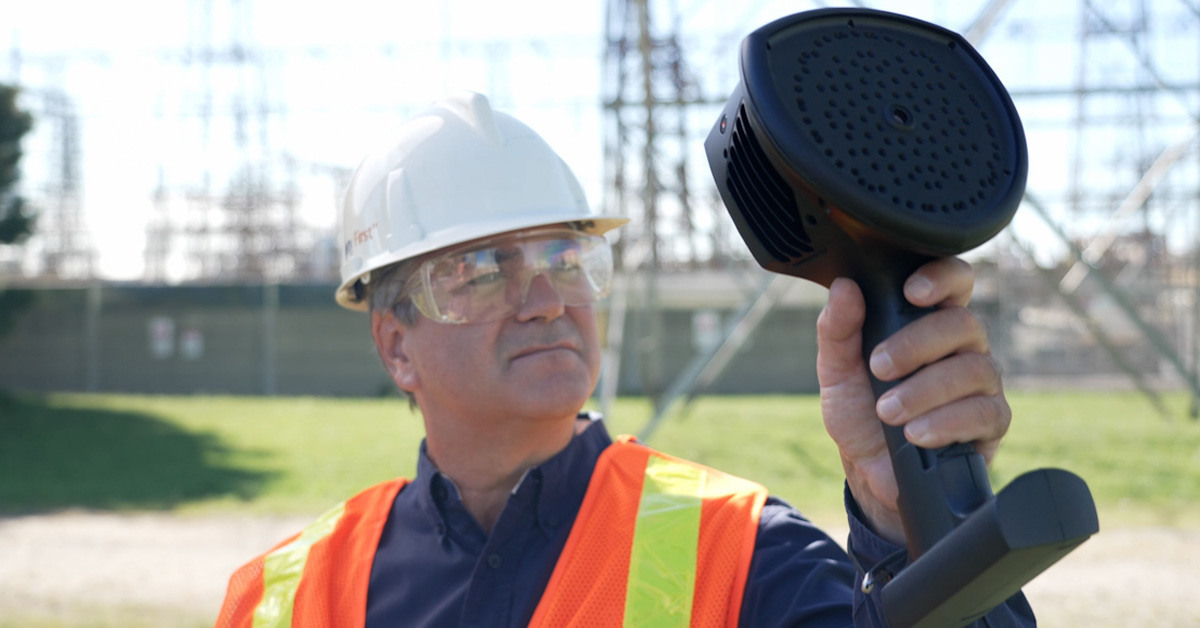
Keep your high-voltage equipment in peak condition
![]()
Detect Partial Discharge
With high-voltage (HV) electrical equipment, partial discharge (PD) represents an invisible threat that can wreak havoc on critical infrastructure. If left undetected, PD—such as arcing, corona, and surface discharge—can run the risk of causing power interruptions, leading to emergency repairs. These repairs can amount to millions of dollars for remote locations, and are multiple times more costly than planned repairs.
Maintenance workers are now starting to use acoustic imaging to target PD by finding its distinctive sound signature even before equipment fails. The FLIR Si-Series includes a range of acoustic imaging cameras for partial discharge detection in high-voltage systems. These lightweight, one-handed cameras combine advanced signal processing with AI to automatically detect and recognize PDs up to 10 times faster than traditional methods, with minimal training.
![]()

FLIR Si2-PD and FLIR Si2-Pro
Find partial discharge in high-voltage electrical systems
Efficiently and securely perform non-contact inspections with the FLIR Si2 for PD detection, or the versatile FLIR Si2-Pro, which not only detects PD but also provides acoustic leak detection for indentifying pressurized leaks in compressed air systems, faults in vacuum systems, and CO2 leaks.
See How Acoustic Imaging Works

Acoustic Imaging Guides
ACOUSTIC IMAGING GUIDEBOOK
USING ACOUSTIC IMAGING FOR PARTIAL DISCHARGE MONITORING
Why Acoustic Imaging for Partial Discharge Detection?
LOCATE Partial Discharge QUICKLY
FLIR Si-Series Acoustic Imaging Cameras, offer advanced sound-based solutions for detecting and analyzing industrial issues such as faults, deterioration, and defects, including partial discharge. Remarkably, sound anomalies generated by partial discharge often precede temperature increases that are detectable by thermal imaging cameras. This grants an added layer of early detection for potential future failures.
While it's not uncommon to hear humming or buzzing near power lines, partial discharge is typically beyond the range of human hearing, rendering them exceptionally challenging to pinpoint. This is especially true in noisy work environments with elevated background noise levels. By utilizing a handheld acoustic imaging camera, similar to a thermal imaging camera, users can scan an area and visualize the precise location of ultrasonic sounds generated by partial discharge on a digital image of the inspected components, regardless of whether these sounds are inaudible or concealed by background noise.
Partial Discharge DIAGNOSTICS—ESSENTIAL FOR PREDICTIVE MAINTENANCE
The identification of partial discharge is an indispensable component of an efficient Condition-Based Monitoring (CBM) or Predictive Maintenance (PdM) strategy. Detecting partial discharge at an early stage is critical as it minimizes potential damage to insulators and significantly reduces the risk of equipment failure, consequently, mitigating downtime.
Achieve Quick ROI
The financial rationale for proactively addressing partial discharge is straightforward: it proves to be a far more cost-effective and less disruptive approach to identify and address partial discharge issues, strategically plan scheduled downtime, and undertake necessary repairs and replacements for insulators and electrical components.
